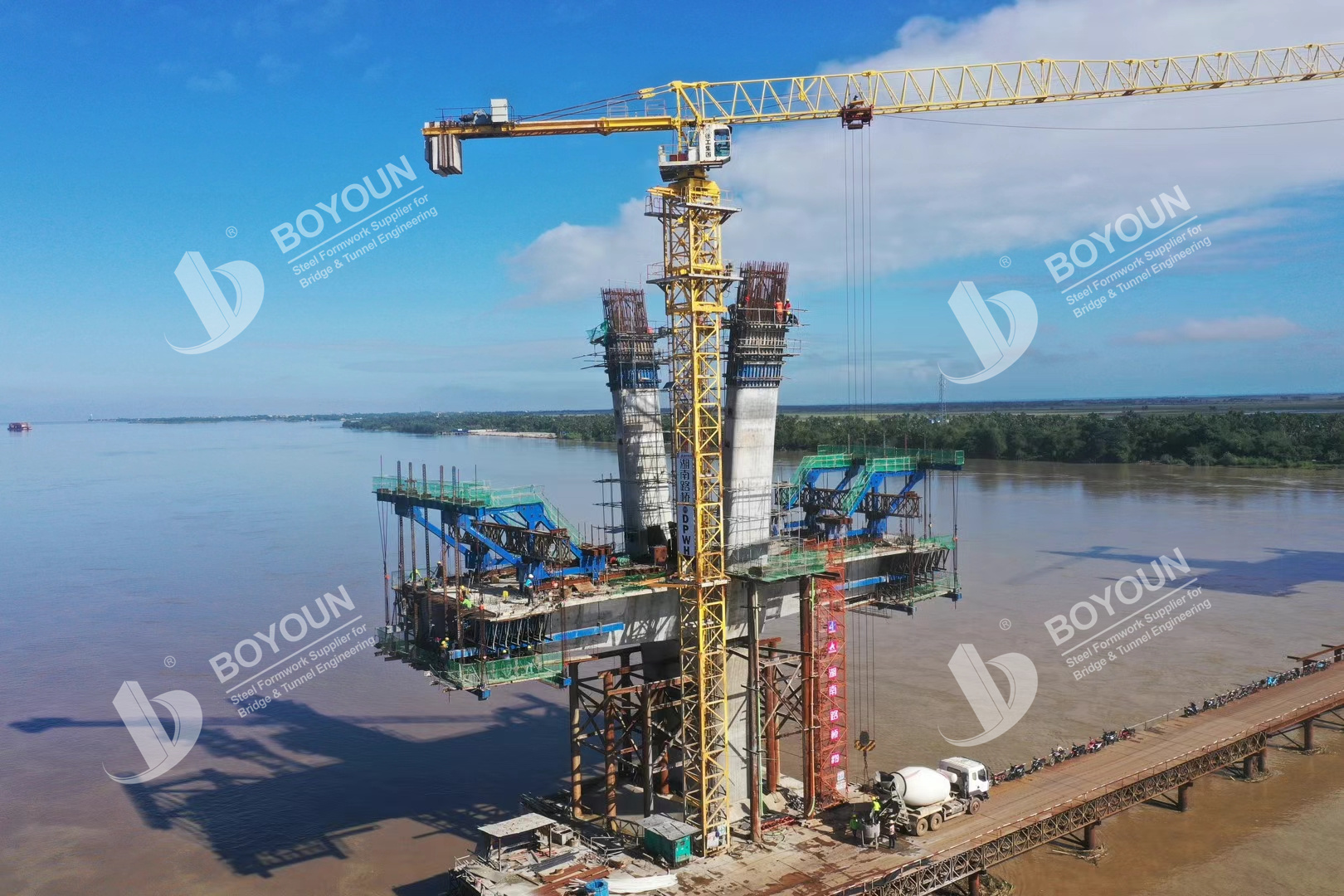Project: Philippines Camalaniugan Bridge
Length: 1580m
Type: Cable-stayed bridge
Features: A cable-stayed bridge with two main spans, three short towers and double cable planes that adopts tower-beam consolidation and tower-pier separation systems.
Construction unit: Philippine Department of Public Works
Design unit: Hunan Road and Bridge Construction Group Co., Ltd.
Construction unit: Hunan Road and Bridge Construction Group Co., Ltd.

The Philippines is a country of thousands of islands, but the lack of large bridges has led to low transportation efficiency, which has seriously hindered the development of the local economy. As a result, the "Build, Build, Build" program was born, and the construction of the Camalaniugan Bridge began in 2021.
The bridge is designed to cope with the severe environment of "magnitude 9 earthquake and magnitude 18 wind". In the Philippines, where earthquakes occur frequently and the designed seismic acceleration at the bridge location reaches 0.5g. By optimizing the stress-bearing system of the bridge and setting up anti-seismic isolation bearings, seismic waves are blocked from the bridge bearings, greatly improving the bridge's seismic resistance. The bridge is located in the Pacific strong typhoon area, and the maximum wind speed during the typhoon transit reaches 320km/h. By optimizing the aerodynamic shape of the structure and increasing the damping of the diagonal cable, the main structure of the bridge remains safe under the action of the strong typhoon.
1. The construction of pile foundations is affected by tides, and the maximum thickness of the silt sand layer in the drilled stratum reaches 52m. In order to solve the problem of the quality of pile foundation holes in the thick silt sand layer and prevent problems such as hole collapse and hole inclination, Boyoun and the project management team conducted Research on the construction technology of deep water foundation drilling in thick silt sand layers has effectively solved this problem by increasing the depth of the casing into the soil, adjusting the mud configuration, controlling the drilling speed, and strengthening monitoring and measurement.
2. The project management team adopted the "Innovative Application of Steel Suspension Box Precast Concrete Floor" in the construction of the main pier cap, which changed the traditional steel suspension box structural form. At the same time, it effectively solves the problem of insufficient buoyancy caused by shallow water entry depth, reduces construction costs, and shortens the water operation cycle.
3.The main cable tower of the Camalaniugan Bridge is a relatively rare "Y" tower structure. When positioning the cable saddles and cable guides, not only the inclination angle and plane position in both directions along the bridge and across the bridge need to be considered. , and its corners need to be accurately positioned, which puts forward high requirements for construction measurement. To this end, the project management team used the semi-circular plate method with the same diameter to accurately find the center positions of the cable saddle split wire pipe and the cable guide tube. Finally, it was used as a control point for on-site setting out and positioning, which effectively ensured the installation accuracy of the stay cable.

The bridge is located in Aparri City, Cagayan Province, Republic of the Philippines, in the northern part of Luzon Island. It spans the east and west banks of the Cagayan River and is about 7km away from the outlet of the Bashi Channel. The construction is affected by the tide. In addition, the project is located on the path of typhoons, with an average of 7 to 8 typhoons passing through every year, which has a greater impact on the construction. In addition, during the construction of the project, it withstood the largest earthquake of magnitude 7.1, 210 kilometers away from the earthquake source, and the quality of the main body of the bridge was not affected in any way.
Camalaniugan Bridge is the first cable-stayed bridge invested and constructed by the Department of Public Works and Highways (DPWH) of the Republic of the Philippines. It is a landmark building in the northern Philippines and a key construction project of the Department of Public Works and Highways of the Republic of the Philippines. The completion of this project will solve the problem of lack of connecting roads between the east and west banks of the Cagayan River in northern Cagayan Province. It is of great significance to help connect surrounding cities with the Ilocos region, promote business development, increase employment opportunities, and promote the economic development of the region.





International Department: Room 2211-2212, Tower C of Wanda Plaza, Tongzhou District, Beijing 101118, China.
+86-13021287080
info@boyoun.cn